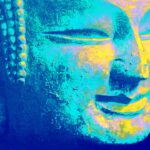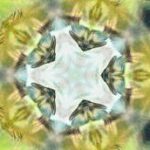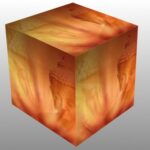Recent Comments
- Vajragoni on Insights into Voidness
- Vajragoni on Is there an Afterlife?
- Scott on Insights into Voidness
- Scott on Is there an Afterlife?
- Scott on Aloneness
-
Recent Posts
Categories
- A Darkness Visible
- A Docetic Assessment
- A Mystical Odyssey through the Sagathakam
- AI Creations
- Akṣayamatinirdeśasūtra
- Akṣhobhya’s Pure Land
- Ālaya-vijñāna
- Anūnatvāpūrṇatvanirdeśaparivarta
- Ariyapariyesanā Sutta
- Ascending the Noble Mountain of Primordial Perfection
- Asceticism
- Ashtavakra Gita in Light of the Unborn
- Audiobook
- Bankei Zen
- Beyond the Ascent
- Beyond the Rainbow Body
- Black Dragon Eye Mandala
- Bodhicitta
- Buddhadharma
- Buddhism’s Black Holes
- Buddhist Anecdotes
- Buddhist Hells
- Buddhist Meditations on the Tarot
- Chuang-Tzu
- Contemporary Musings
- Ḍākiṇī
- Dāsbodh
- Dharmakaya Abbey
- Dharmakaya Stick
- Divine Revelation
- Doctrine of the Void
- Dust Contemplation
- Ekacitta: Advanced Studies in Dark Zen
- Entry into the Dharmadhātu
- Eremitical Dhyani Meditations
- Exploring the Book of Revelation
- Gnostikos
- Hsin Hsin Ming
- Journey to the Center of the Mind
- Karma and Rebirth
- Korean Sŏn
- Kulayarāja Tantra—The Motherly Buddha
- Little Office of Our Lady of the Void
- LSD and Psychedelic Buddhism
- Māṇḍukya Kārikā
- Mañjuśrī Teaches Prajñāpāramitā
- Māra and Satan
- Meet the Buddhas
- Meister Eckhart
- Mud and Water: Bassui Zen
- Mystagogia
- Nirvana
- Notes from the Iron Stupa
- Nothingness in Nāgārjuna and John of the Cross
- Obscure Religious Cults
- Preparation for the Afterlife
- Primordial Qigong
- Reflections on the Saṃdhinirmocana Sūtra
- Sessions with Grok
- Spirituality
- Springtime with Tozen
- Terma: A Mind Film by Vajragoni
- The Afterglow
- The Awakening of Faith
- The Bhagavad Gita
- The Book of Bodhi
- The Cloud of Unknowing in Light of the Unborn
- The Diamond Sutra
- The Divine Ātman
- The Divine Liturgy of Vajrasattva
- The Doctrine of Awakening
- The Dragon Mind of Zen Tarot
- The Elucidation of Consciousness
- The Experience of No-Self
- The Great Perfection of the Unborn Mind: A Book of Privy Counseling
- The Heart Sutra
- The Hermit's Den
- The Khaggavisāṇa Sutta: A Rhinoceros Horn
- The Lankavatara Sutra
- The Lankavatarian Book of the Dead
- The Lion's Roar of Queen Śrīmālā
- The Lotus Sutra
- The Mahāparinirvāṇasūtra
- The Naga Chronicles
- The Platform Sutra
- The Ratnagotravibhāgaśāstra
- The School of the Spirit
- The Secret Golden Light of the Unborn
- The Soul
- The Śūrańgama Sūtra
- The Sutra of Primordial Enlightenment
- The Tathāgatagarbhatārā Tantra
- The Udāna
- The Unborn Mind Mythos
- The Unborn Mind Sessions
- The Unborn Odyssey: A Novel
- The Vajrasamādhi Sutra
- The Vimalakirti Sutra
- The Yogasūtras of Patañjali
- The Zen Teaching of Bodhidharma
- The Zen Teaching of Instantaneous Awakening
- The Zen Teachings of Huang Po
- Theologia Mystica
- Tozen Teaching
- Tsung-mi: An Intimate Study
- Unborn I Ching
- Unborn Light Reiki
- Uncategorized
- Vasubandhu and the Absolute
- Wisdom from the Masters
- Wordsworth and Zen
- Yoga of the Manomayakāya
- Zen
- Zuowang
Archives
- March 2025
- February 2025
- October 2024
- August 2024
- February 2024
- January 2024
- December 2023
- November 2023
- October 2023
- September 2023
- August 2023
- July 2023
- June 2023
- May 2023
- April 2023
- March 2023
- February 2023
- January 2023
- December 2022
- November 2022
- October 2022
- September 2022
- August 2022
- May 2022
- April 2022
- March 2022
- February 2022
- January 2022
- December 2021
- November 2021
- October 2021
- September 2021
- August 2021
- May 2021
- April 2021
- March 2021
- February 2021
- January 2021
- December 2020
- November 2020
- October 2020
- September 2020
- August 2020
- May 2020
- April 2020
- March 2020
- February 2020
- January 2020
- December 2019
- November 2019
- October 2019
- September 2019
- August 2019
- June 2019
- February 2019
- January 2019
- December 2018
- October 2018
- August 2018
- April 2018
- March 2018
- February 2018
- January 2018
- December 2017
- November 2017
- October 2017
- September 2017
- August 2017
- May 2017
- April 2017
- March 2017
- February 2017
- January 2017
- December 2016
- November 2016
- October 2016
- September 2016
- August 2016
- July 2016
- May 2016
- April 2016
- March 2016
- February 2016
- January 2016
- December 2015
- November 2015
- October 2015
- September 2015
- August 2015
- July 2015
- June 2015
- May 2015
- April 2015
- March 2015
- February 2015
- January 2015
- December 2014
- November 2014
- October 2014
- September 2014
- August 2014
- May 2014
- April 2014
- March 2014
- February 2014
- January 2014
- December 2013
- November 2013
- October 2013
- September 2013
- August 2013
- May 2013
- April 2013
- March 2013
- February 2013
- January 2013
- December 2012
- November 2012
- October 2012
- September 2012
- August 2012
- May 2012
- April 2012
- March 2012
- February 2012
- January 2012
- December 2011
- November 2011
- October 2011
Meta
Monthly Archives: November 2020
Nāgārjuna’s Nirvana

Nāgārjuna’s stance on Nirvana is best illustrated in his Magnum Opus, The Mūlamadhyamakakārikā. In Sanskrit it is translated as “Root Verses on the Middle Way”. The work is comprised of 448 verses in twenty-seven chapters. Chapter twenty-five is on Nirvana. As a whole this philosophic-wonder is an inexorable analysis of many of the most central categories of Buddhist thought, exposing them to a scrutiny that disclosures the absurd consequences that follow from envisioning any of them to be real in the sense of possessing an independent and intrinsic nature (Svabhāva). Nāgārjuna drives-home the realization that all these categories exist only relationally but do not exist in an Absolute sense. In the Twenty-fifth chapter, he subjects Nirvana to a similar critique, finding it to be neither existent, nonexistent, both existent and nonexistent, nor neither existent nor nonexistent. These, of course, are his “four alternatives” or tetralemma. Hence, Nirvana like Samsara is self-empty of that intrinsic nature. In this sense there is no-difference between them. This chapter consists of 24 aphorisms that concisely strips-down Nirvana bare and reveals for us what it is and is not. The rest of this blog will present each of these with accompanying commentary.
Posted in Nirvana
Tagged antinomies, Ens, Fyodor Shcherbatskoy, Mūlamadhyamakakārikā, Nagarjuna, tetralemma
5 Comments
Nirvana in the Dharmakaya Sutra

As a great buildup to the Dharmakaya as the Nirvanic Kingdom of Self found in the Dharmakaya Sutra, we first need to review The Mahāparinirvāṇasūtra (Nirvana Sutra). When first asked what is meant by Nirvana, The Blessed One responds with Nirvana is what I mean by Liberation. But this is no ordinary liberation. True liberation neither comes into existence nor goes out of existence. This is precisely the Great Liberation of the Tathagata. He does not come into existence, he does not go out of existence, he does not age, he does not die. Thus:
The Lanka’s Nirvana

As a quick reference, the abridged version of the Lankavatara Sutra as found in the Buddhist Bible, Chapter XIII, offers a general overview of the Lanka’s take on Nirvana. Our Study will offer here a more extensive treatment as covered throughout the sutra. This is largely a compilation from the Complete Lanka and Discussion as found in our library.
Posted in Nirvana
Tagged Four kinds of Nirvana, icchantika, itaretara, manovijñāna, MEANING, nirvana, Samadhi Mayopama, samsara, Tozen
3 Comments
School Days

This blog will overview Nirvana as seen through the lens of the various Buddhist schools. This snapshot is a quick summary:
Posted in Nirvana
Tagged apratiṣṭhitanirvāṇa, Mādhyamika, Mahāyānasaṃgraha, Sarvāstivāda, Sautrāntikas, schools, Vaibhāṣika, Yogācāras
Leave a comment
Nirvana: Early Foundations

The early formulations of Nirvana hinges upon primary ideations of what constitutes life after death. Materialists would not even consider notions of what happens to the corporeal frame after the life cycle ended. For them all life simply ceases to exist in any form since the “Material Substance” is hereafter disbanded altogether. Eternalists emphasized the notion that the “individual soul” lingers on after death into some form of heavenly paradise. This idea continues today in Christianity and other mainline religions. Other spiritual schools insist that the “person” dissolves away after the earthly sojourn and now merges with and enjoys some impersonal embrace of an all-encompassing Absolute. Others, like Hinduism, believed that the individual soul would return to its earliest primal state after many rebirths.
Posted in Nirvana
Tagged Absolute Quiescence, eternalists, nirvana, samadhi, samāpatti, Yoga
Leave a comment
